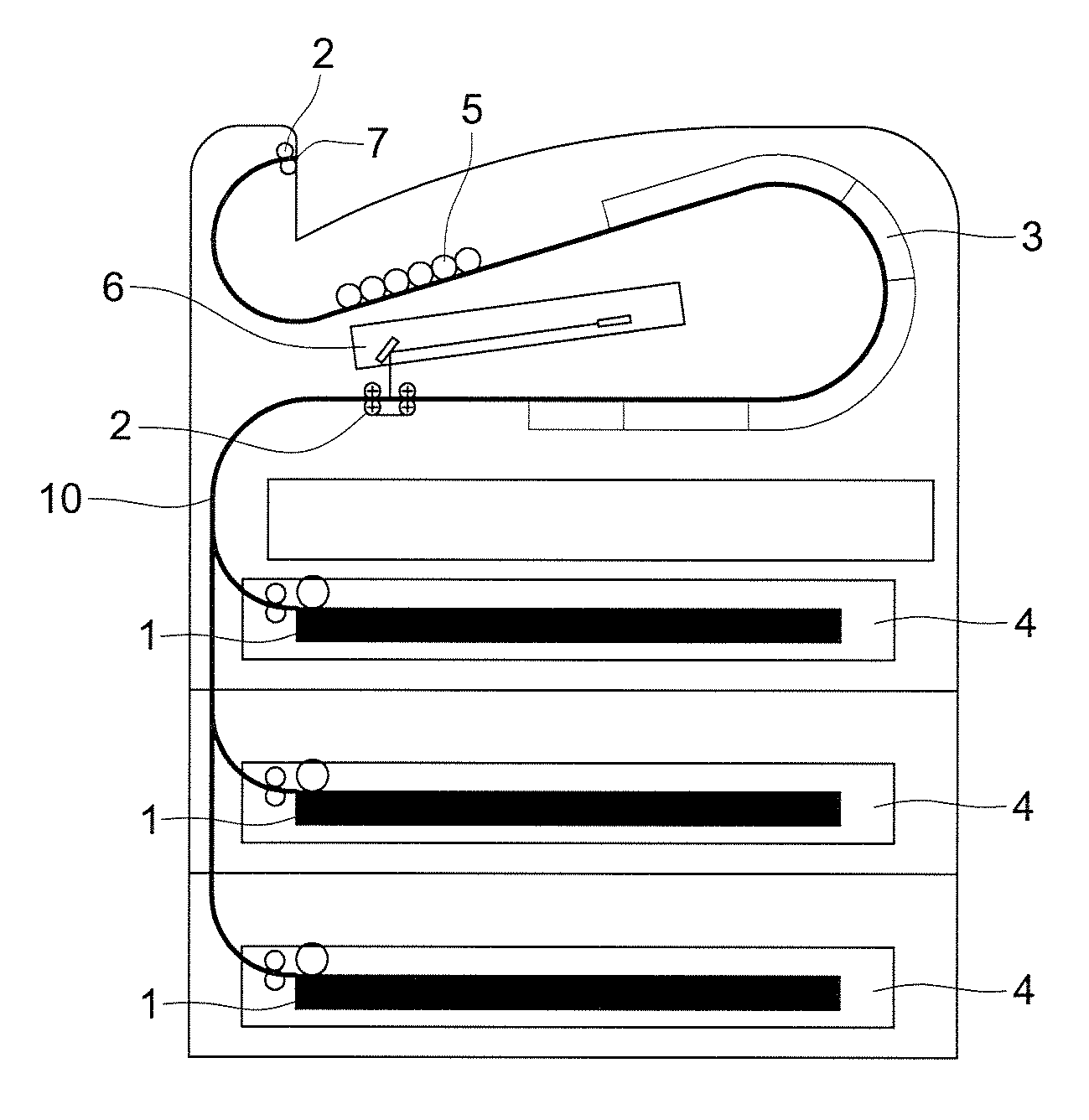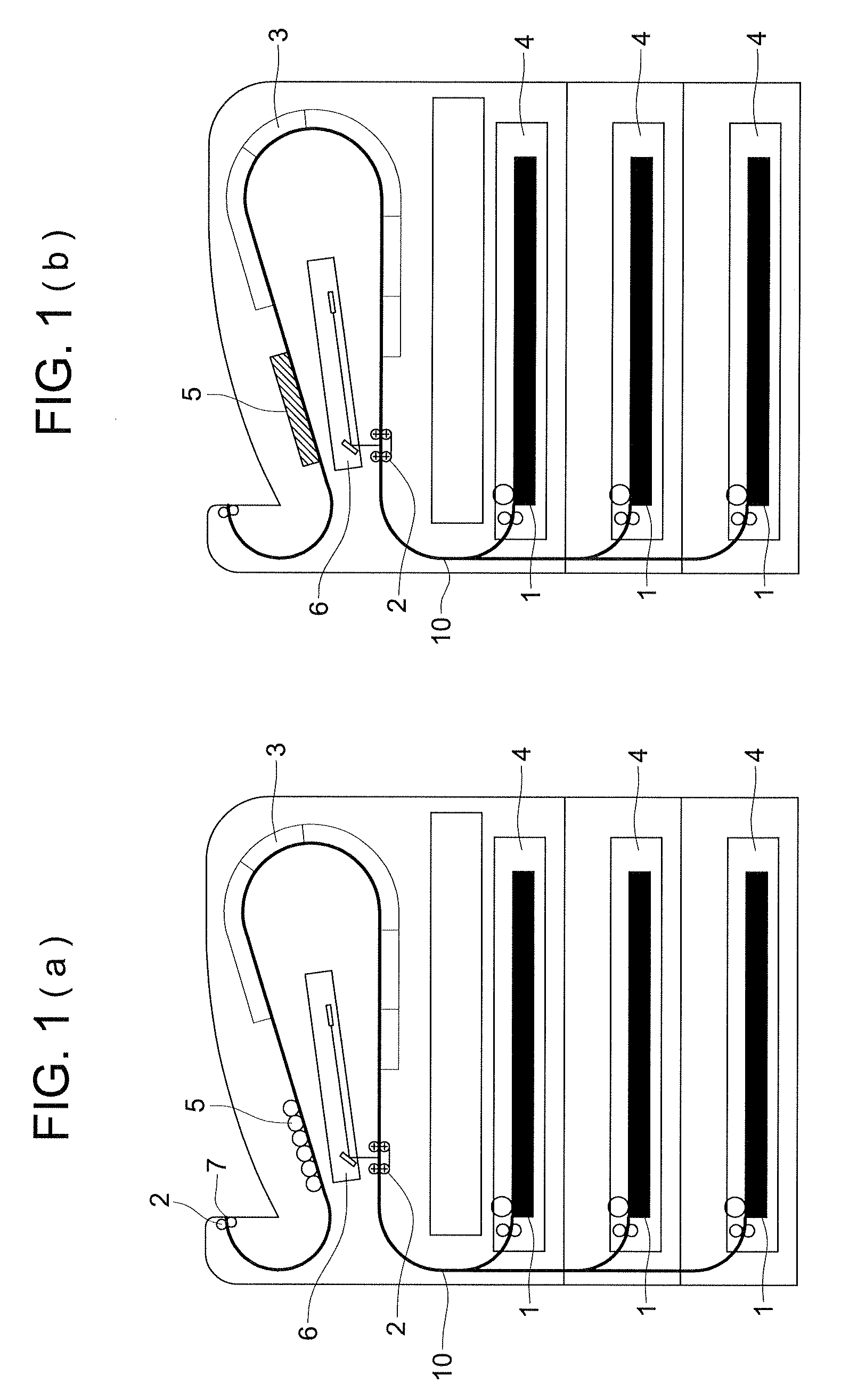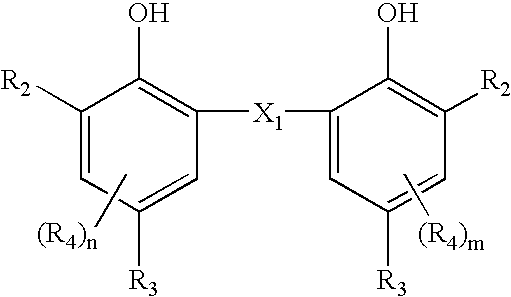Silver salt photothermographic dry imaging material
a technology of photothermographic and dry imaging, which is applied in the field of silver salt photothermographic dry imaging material, can solve the problems of deteriorating image lasting quality or raw stock stability, and achieve the effects of reducing fogging, superior raw stock stability, and high maximum density
- Summary
- Abstract
- Description
- Claims
- Application Information
AI Technical Summary
Benefits of technology
Problems solved by technology
Method used
Image
Examples
example 1
Preparation of PET Support:
[0322] According to the conventional method, polyethylene terephthalate (PET) exhibiting an intrinsic viscosity (IV) of 0.66 (in phenol / tetrachloroethane=6 / 4 by weight) was obtained using terephthalic acid and ethylene glycol. After pelleting, the PET was dried over 4 hrs. at 130° C., melted at 300° C., extruded through a T-type die and subjected to rapid cooling to obtain unstretched film exhibiting a thickness of 175 μm after being having been subjected to heat-fixing.
[0323] The thus obtained film was longitudinally stretched by a factor of 3.3 using rolls differing in circumferential speed and laterally stretched 4.5 times using a tenter at temperatures of 110° C. and 130° C., respectively. The stretched film was subjected to heat-fixing at 240° C. for 20 sec. and then subjected to relaxation in the lateral direction at the same temperature. Thereafter, a portion corresponding to the chuck of the tenter was slit off and both edges were subjected to a...
PUM
 Login to View More
Login to View More Abstract
Description
Claims
Application Information
 Login to View More
Login to View More - R&D
- Intellectual Property
- Life Sciences
- Materials
- Tech Scout
- Unparalleled Data Quality
- Higher Quality Content
- 60% Fewer Hallucinations
Browse by: Latest US Patents, China's latest patents, Technical Efficacy Thesaurus, Application Domain, Technology Topic, Popular Technical Reports.
© 2025 PatSnap. All rights reserved.Legal|Privacy policy|Modern Slavery Act Transparency Statement|Sitemap|About US| Contact US: help@patsnap.com



